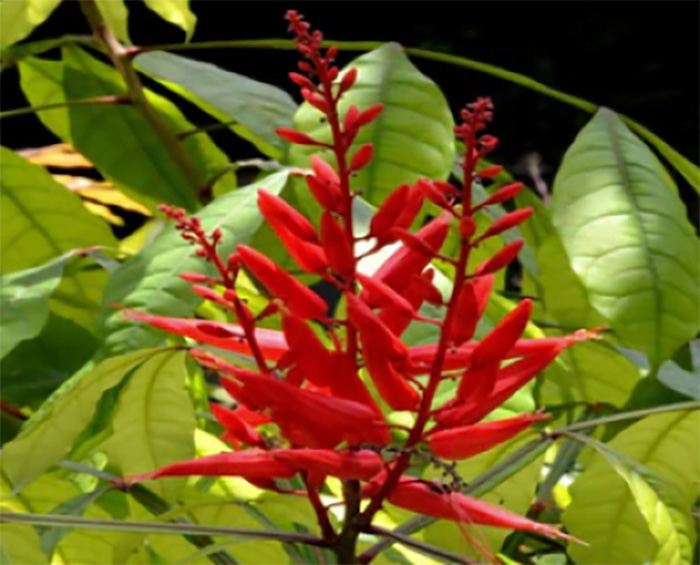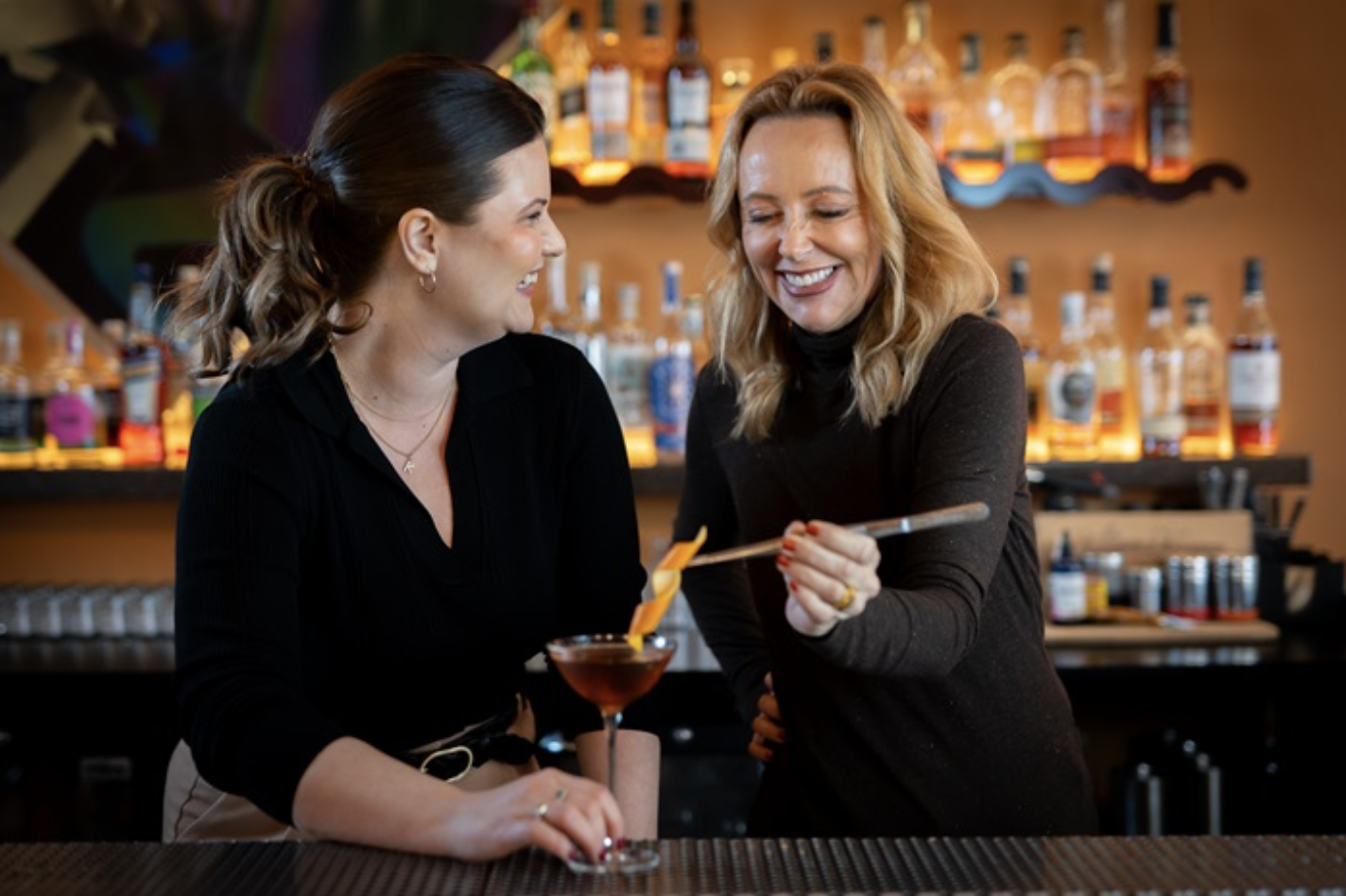Foraged Summer Sips
By Kristine Bocchino | May 2024
While the practice of sourcing locally is not novel, its advantages have significantly grown in recent years. Proven to offer fresher, more flavorful, and nutritionally superior produce, owing to substantial reductions in processing and shipping, utilizing foods grown locally not only supports regional farmers but also bolsters the local economy and ecosystem. With the imminent, and in some cases dire, consequences of climate change, acknowledging the importance of sourcing from nearby farms, orchards and even jungles has become paramount in reducing our carbon footprint and fostering biodiversity. Furthermore, in many areas, individuals cultivate or forage for ingredients out of necessity due to limited access and financial constraints. Consequently, by conscientiously opting for local sourcing, we can foster a more sustainable and inclusive food system that benefits us all.
On the heels of Earth Day 2024, let’s take a look at how three of our Ada Coleman Project Movers and Shakers pay homage to the land by integrating indigenous plants and fruits into their summer menus.
SAMIA JOAN – NAIROBI, AFRICA
Tamarind, (UKWAJU in Swahili) which is grown for the most part in the coastal region of Kenya where our listee Samia Joan is based, is rich in antioxidants, containing high magnesium and calcium levels, and is believed to have anti-cancer and protective liver benefits. Tamarind is used widely by the Swahili people, says Samia, as an ingredient to give their food a bit more spice. “It is an indigenous fruit to tropical Africa, which until recently the mainland people have come to know about it, by the growing popularity of its juice.”
What makes Tamarind a great cocktail ingredient? According to Samia, “being able to combine Tamarind and Sugarcane which are both tropical plants, with the Sugarcane (grown in our western region, where we have Sugarcane plantations and sugar factories) giving its natural sugars to the tart Tamarind, creates an amazing balance. This combination is borrowed from the street vendors whom have made the combo popular as a refreshing juice drink, especially with the recent heat wave in the region.”
As a southern California gal, I’ve seen tamarind frequently used in margaritas, but Samia shares that it works amazingly well with Whisky and Rum. “It’s very refreshing and makes a cocktail even more palatable as whisky or rum complement both the sweet and tart aspects of the juice/fruit.
This refreshing cocktail created by Samia definitely has a tropical flare, using both dark and spiced rums, where the combination gives the drink a tart taste, and finishes with a hint of sweetness.
BINTI (Swahili for daughter or young lady)
Tamarind Syrup
Tamarind Sugarcane juice
Lemon Juice
Bacardi Spiced Rum
Bacardi Carta Negra
Garnish: Sugarcane stalk & Tamarind fruit
SARAH DAWN MITCHELL – NAPIER, NEW ZEALAND
Based in New Zealand, Sarah Mitchell is blessed with access to a multitude of unique native ingredients. At Teresa Cocktail Bar, which she co-owns with her partner Andrea M, they emphasize the use of foraged and native NZ produce, well-documented in their social media documented adventures.
“While Kawakawa leaves are commonly used in NZ cuisine and may have even gained international recognition as a tea, the Kawakawa Berry is somewhat of an undiscovered delight” shares Sarah. These berries grow only on the female plant and during a very limited season, shortened even more because the native Tui (bird) loves to eat them! “Kawakawa Berry offers the very fascinating flavour profile combination of carrot, mango, and cinnamon” and to add a bit of unexpected whimsy, they “contain tiny seeds that create a numbing sensation on the palate when bitten, similar to Szechuan peppers.”
Due to the short season, Sarah and the Teresa team have found that dehydrating the berries is the best way to concentrate their flavour and sustain their supply. Once dried, the berries are infused into gin, with the flavour being so intense that one berry can be used to create up to three litres of spirit.
The cocktail below, inspired by the Corpse Reviver, but with a tropical twist, was a big hit from the bars most recent Summer cocktail menu at Teresa.
HOBBY
Kawakawa Berry Infused Gin
Mancino Dry Vermouth
Salted Apricot Liqueur
5% Acid Solution
Burnt Fig Leaf Caramel
Garnish: Glitter Absinthe Paint
LIZ FURLONG – TAMARINDO, COSTA RICA
Sp. Quassia Amara, known locally in Costa Rica as Amargo or Hombre Grande (Big Man), has been difficult for many scientists to pin down as far as establishing its original geographical scope of natural distribution, due to its widespread cultivation for medicinal use; however, generally, it is supposed to be native from southern Mexico to northern Brazil and the Western Antilles.
“Quassia has been used as an ancestral bitter digestive aid for centuries in the rainforest” says Liz Furlong, co-owner of Cata Agave Bar in Tamarindo, Costa Rica. While often confused with Cinchona, the two trees are not related, though they contain similar properties. Like many ingredients frequently used to produce bitter amari, “Quassia bark has many beneficial qualities, and is where indigenous peoples have extracted virus-killing, anti-malarial, and fever-fighting herbal medicines.” For these reasons, in addition to its bold, earthy and bitter taste, Hombre Grande is actually left to infuse in a bottle of Guaro Cacique (local fire water) in many cantinas and some homes across Costa Rica. According to Liz this bitter tonic is commonly used by locals as a popular hair-of-the-dog, and the Cata team also feels that it lends well as a bitter base for a cocktail, while paying homage to Costa Rican roots.
Although one can also use the leaves, for this stirred cocktail Liz uses both the wood and bark of the Quassia to produce Cata’s house-made Hombre Grande Bitters, and she feels that the incorporation of mezcal and house-made cacao liqueur “really brightens this cocktail”, making it “prime for a sophisticated summer nightcap”, and I tend to agree….
EL SHORT KING
Mezcal
House Cacao Liqueur
Bitter Orange Bitters
House Hombre Grande Bitters
Unrefined Sugar Cane Juice
While the practice of sourcing locally is not novel, its advantages have significantly grown in recent years. Proven to offer fresher, more flavorful, and nutritionally superior produce, owing to substantial reductions in processing and shipping, utilizing foods grown locally not only supports regional farmers but also bolsters the local economy and ecosystem. With the imminent, and in some cases dire, consequences of climate change, acknowledging the importance of sourcing from nearby farms, orchards and even jungles has become paramount in reducing our carbon footprint and fostering biodiversity. Furthermore, in many areas, individuals cultivate or forage for ingredients out of necessity due to limited access and financial constraints. Consequently, by conscientiously opting for local sourcing, we can foster a more sustainable and inclusive food system that benefits us all.
On the heels of Earth Day 2024, let’s take a look at how three of our Ada Coleman Project Movers and Shakers pay homage to the land by integrating indigenous plants and fruits into their summer menus.
SAMIA JOAN – NAIROBI, AFRICA
Tamarind, (UKWAJU in Swahili) which is grown for the most part in the coastal region of Kenya where our listee Samia Joan is based, is rich in antioxidants, containing high magnesium and calcium levels, and is believed to have anti-cancer and protective liver benefits. Tamarind is used widely by the Swahili people, says Samia, as an ingredient to give their food a bit more spice. “It is an indigenous fruit to tropical Africa, which until recently the mainland people have come to know about it, by the growing popularity of its juice.”
What makes Tamarind a great cocktail ingredient? According to Samia, “being able to combine Tamarind and Sugarcane which are both tropical plants, with the Sugarcane (grown in our western region, where we have Sugarcane plantations and sugar factories) giving its natural sugars to the tart Tamarind, creates an amazing balance. This combination is borrowed from the street vendors whom have made the combo popular as a refreshing juice drink, especially with the recent heat wave in the region.”
As a southern California gal, I’ve seen tamarind frequently used in margaritas, but Samia shares that it works amazingly well with Whisky and Rum. “It’s very refreshing and makes a cocktail even more palatable as whisky or rum complement both the sweet and tart aspects of the juice/fruit.
This refreshing cocktail created by Samia definitely has a tropical flare, using both dark and spiced rums, where the combination gives the drink a tart taste, and finishes with a hint of sweetness.
BINTI (Swahili for daughter or young lady)
Tamarind Syrup
Tamarind Sugarcane juice
Lemon Juice
Bacardi Spiced Rum
Bacardi Carta Negra
Garnish: Sugarcane stalk & Tamarind fruit
SARAH DAWN MITCHELL – NAPIER, NEW ZEALAND
Based in New Zealand, Sarah Mitchell is blessed with access to a multitude of unique native ingredients. At Teresa Cocktail Bar, which she co-owns with her partner Andrea M, they emphasize the use of foraged and native NZ produce, well-documented in their social media documented adventures.
“While Kawakawa leaves are commonly used in NZ cuisine and may have even gained international recognition as a tea, the Kawakawa Berry is somewhat of an undiscovered delight” shares Sarah. These berries grow only on the female plant and during a very limited season, shortened even more because the native Tui (bird) loves to eat them! “Kawakawa Berry offers the very fascinating flavour profile combination of carrot, mango, and cinnamon” and to add a bit of unexpected whimsy, they “contain tiny seeds that create a numbing sensation on the palate when bitten, similar to Szechuan peppers.”
Due to the short season, Sarah and the Teresa team have found that dehydrating the berries is the best way to concentrate their flavour and sustain their supply. Once dried, the berries are infused into gin, with the flavour being so intense that one berry can be used to create up to three litres of spirit.
The cocktail below, inspired by the Corpse Reviver, but with a tropical twist, was a big hit from the bars most recent Summer cocktail menu at Teresa.
HOBBY
Kawakawa Berry Infused Gin
Mancino Dry Vermouth
Salted Apricot Liqueur
5% Acid Solution
Burnt Fig Leaf Caramel
Garnish: Glitter Absinthe Paint
LIZ FURLONG – TAMARINDO, COSTA RICA
Sp. Quassia Amara, known locally in Costa Rica as Amargo or Hombre Grande (Big Man), has been difficult for many scientists to pin down as far as establishing its original geographical scope of natural distribution, due to its widespread cultivation for medicinal use; however, generally, it is supposed to be native from southern Mexico to northern Brazil and the Western Antilles.
“Quassia has been used as an ancestral bitter digestive aid for centuries in the rainforest” says Liz Furlong, co-owner of Cata Agave Bar in Tamarindo, Costa Rica. While often confused with Cinchona, the two trees are not related, though they contain similar properties. Like many ingredients frequently used to produce bitter amari, “Quassia bark has many beneficial qualities, and is where indigenous peoples have extracted virus-killing, anti-malarial, and fever-fighting herbal medicines.” For these reasons, in addition to its bold, earthy and bitter taste, Hombre Grande is actually left to infuse in a bottle of Guaro Cacique (local fire water) in many cantinas and some homes across Costa Rica. According to Liz this bitter tonic is commonly used by locals as a popular hair-of-the-dog, and the Cata team also feels that it lends well as a bitter base for a cocktail, while paying homage to Costa Rican roots.
Although one can also use the leaves, for this stirred cocktail Liz uses both the wood and bark of the Quassia to produce Cata’s house-made Hombre Grande Bitters, and she feels that the incorporation of mezcal and house-made cacao liqueur “really brightens this cocktail”, making it “prime for a sophisticated summer nightcap”, and I tend to agree….
EL SHORT KING
Mezcal
House Cacao Liqueur
Bitter Orange Bitters
House Hombre Grande Bitters
Unrefined Sugar Cane Juice


